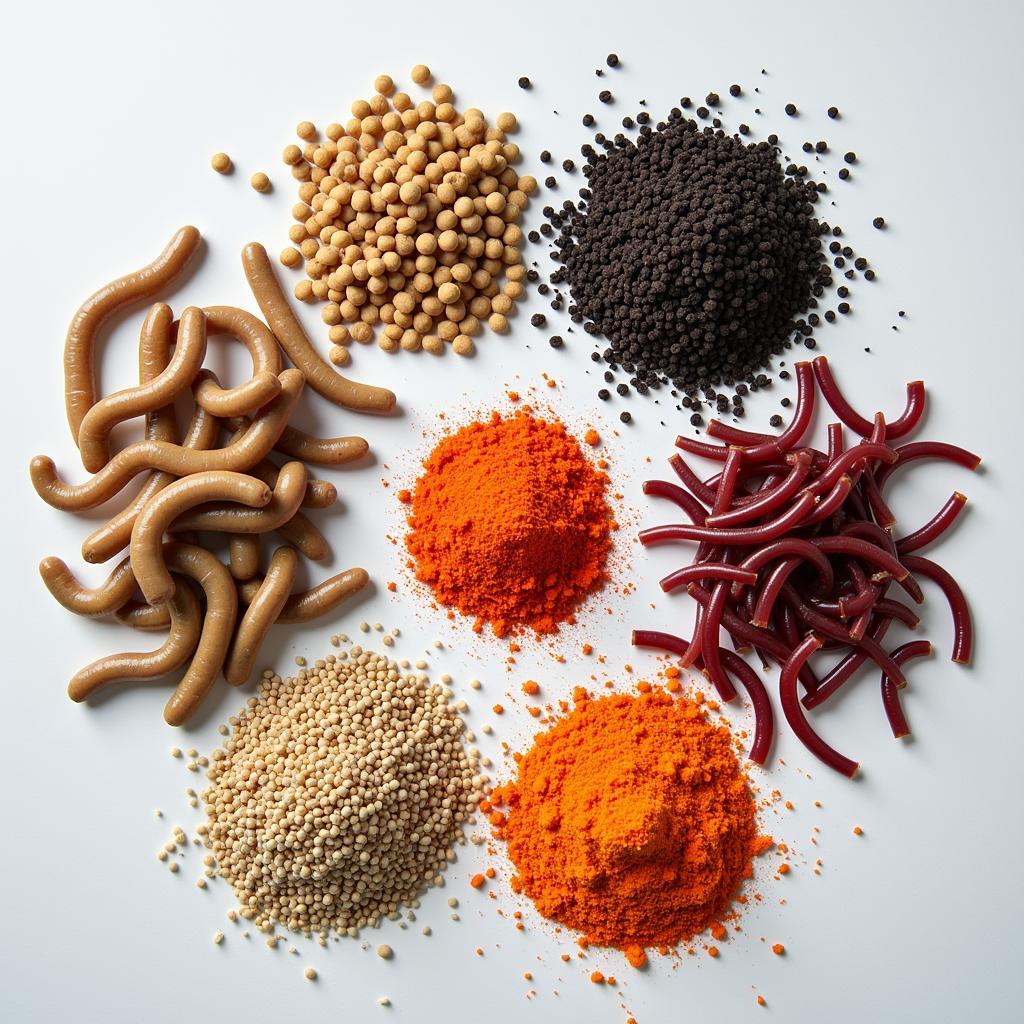Tubifex worms are a popular live food for aquarium fish, offering a nutritious and palatable meal. This comprehensive guide will delve into everything you need to know about using tubifex worms as fish food, from their nutritional benefits to safe handling practices. We’ll cover the pros and cons, ideal fish species, and even explore some alternatives. Let’s dive in!
Understanding the Nutritional Value of Tubifex Worms
Tubifex worms are a rich source of protein, which is essential for fish growth and muscle development. They also contain fats, which provide energy, and various vitamins and minerals that contribute to overall fish health. However, it’s important to note that the nutritional content of tubifex worms can vary depending on their source and how they are cultured. Choosing high-quality tubifex worms from reputable suppliers is crucial. Furthermore, they shouldn’t form the sole basis of a fish’s diet, as a varied diet is key to optimal health. Feeding tubifex worms alongside other foods like high-quality fish flakes or pellets helps ensure a balanced nutritional intake. Considering their smaller size, they make excellent food for ember tetras.
Here at Mina Cones Food, we prioritize providing the best possible nutrition for your aquatic pets. Check out our article on the best food for african dwarf frogs.
Safe Handling and Storage of Tubifex Worms Fish Food
One common concern with tubifex worms is the potential for carrying parasites or bacteria. Proper handling and storage are essential to mitigate these risks. Always rinse tubifex worms thoroughly under running water before feeding them to your fish. This helps remove any potential contaminants. Store them in the refrigerator at a low temperature to prevent spoilage. Avoid overfeeding, as uneaten worms can decompose and negatively impact water quality.
Are you looking for suitable food options for your Black Moor Goldfish? Explore our comprehensive guide on black moor goldfish food.
Which Fish Benefit Most from Tubifex Worms?
While many fish species can enjoy tubifex worms, some benefit more than others. Bottom-dwelling fish, such as loaches and catfish, naturally feed on worms in their wild habitats, making tubifex a great addition to their diet. Similarly, smaller fish with a preference for live food, like certain tetras and rasboras, will readily accept tubifex worms.
Alternatives to Tubifex Worms
If you’re hesitant to use tubifex worms due to the potential risks, several alternatives offer similar nutritional benefits. Bloodworms, for instance, are another popular live food option, rich in protein and easily digestible. Daphnia, also known as water fleas, are a smaller live food option suitable for smaller fish. Freeze-dried or frozen versions of these foods are also available and often safer than live options as they have been processed to eliminate potential pathogens. You might also consider exploring high-quality fish flakes, pellets, or even homemade fish food recipes.
For those with Ember Tetras, finding the right food can be crucial. We’ve got you covered with our detailed guide on ember tetra food.
Are Tubifex Worms Good for All Fish?
While tubifex worms can be a beneficial addition to the diet of many fish species, they are not suitable for all. Some fish have sensitive digestive systems and may experience issues if fed tubifex worms regularly. It’s crucial to research the specific dietary needs of your fish before introducing tubifex worms into their diet.
 Variety of Fish Food Options Including Tubifex Worms, Bloodworms, and Pellets
Variety of Fish Food Options Including Tubifex Worms, Bloodworms, and Pellets
Conclusion
Tubifex worms can be a valuable part of a balanced diet for many aquarium fish, providing essential nutrients and enriching their feeding experience. However, careful handling and storage are crucial to mitigate potential health risks. By following the guidelines outlined in this guide and understanding the specific needs of your fish, you can safely incorporate Tubifex Worms Fish Food into your aquarium feeding routine.
FAQ
- How often should I feed tubifex worms to my fish?
- Can I freeze tubifex worms?
- How do I clean tubifex worms before feeding?
- What are the signs of parasite infection in fish after feeding tubifex worms?
- Are there different types of tubifex worms available for fish food?
- How can I tell if tubifex worms have gone bad?
- What should I do if my fish refuses to eat tubifex worms?
Common Situations and Questions
- My fish seems bloated after eating tubifex worms. This could be a sign of overfeeding or a digestive issue. Reduce the amount of tubifex worms you feed and observe your fish.
- I’m concerned about the safety of tubifex worms. Consider using frozen or freeze-dried alternatives, which are generally safer.
- Where can I buy high-quality tubifex worms? Look for reputable aquarium suppliers who prioritize safe and ethical sourcing.
Further Reading and Resources
Explore our website for more information on fish nutrition and care. You might find our articles on specific fish species and their dietary needs helpful.
Need help? Contact us! Phone: 02437655121, Email: minacones@gmail.com. Visit us at 3PGH+8R9, ĐT70A, thôn Trung, Bắc Từ Liêm, Hà Nội, Việt Nam. We’re available 24/7.